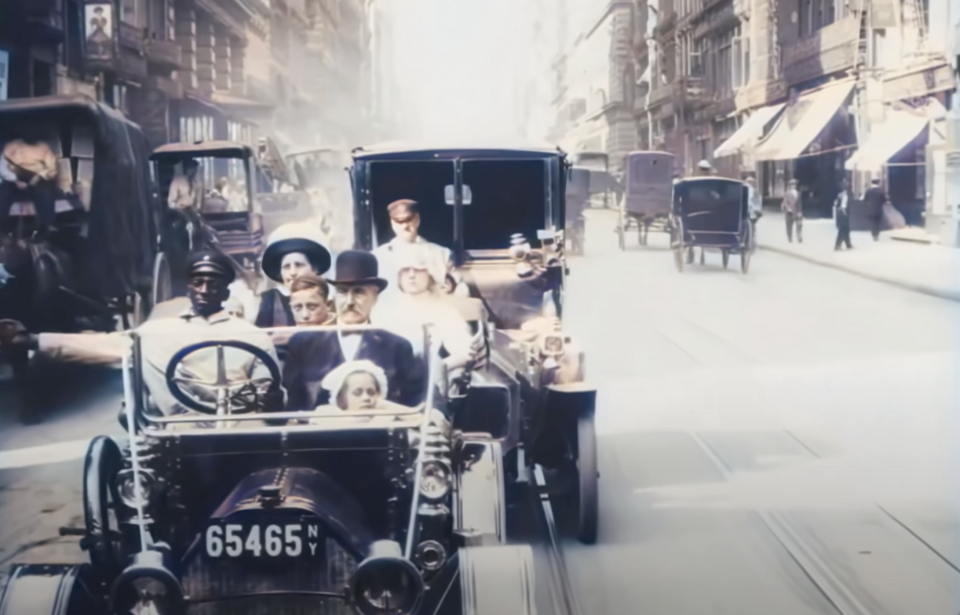A YouTube wizard has given vintage footage of New York City a serious 4K upgrade. Want to take a historic trip to the Big Apple? Denis Shiryaev has used Artificial Intelligence (AI) to upscale the following footage, which was taken in 1911, showing the streets like never before!
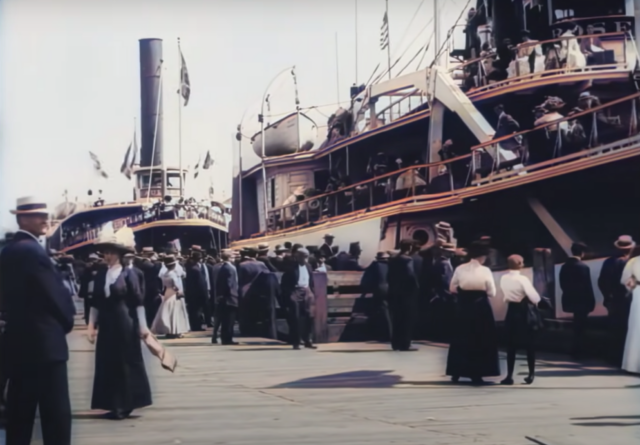
Made in 1911, A Trip Through New York City is one of the many treasures at the Museum of Modern Art. Before, it was grainy, low-resolution, and black and white. Shiryaev, using his online toolkit, has transformed it into a ride full of colors. With it now playing at 60 frames per second, it has the resolution you’d expect from a 21st-century film.
The technological feat was performed using Gigapixel AI from Topaz Labs and Depth-Aware Video Frame Interpolation (DAIN). They’re algorithms powered by neural networks or, put simply, computers designed like primitive brains.
According to Topaz’s website, Gigapixel AI “uses the power of Topaz’s proprietary Artistic Intelligence engine to make sharper and clearer upscaled images more than traditional upscaling tools.” It reportedly makes more than a million calculations when working on each individual pixel.
For the layman, the takeaway is that it’s complicated, but it works!
Wenbo Bao of Shanghai Jiao Tong University says that the DAIN process “aims to synthesize non-existent frames in-between the original frames.” Overall, Artificial Intelligence respects the original source while giving it a very modern treatment, fleshing it out digitally and adding new dimensions that create an extraordinary effect.
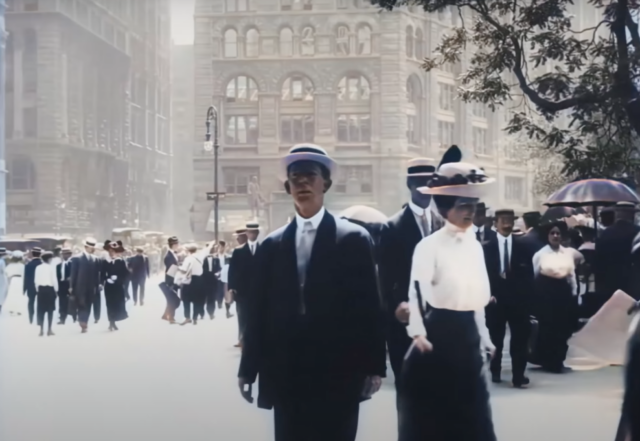
A Trip Through New York City was originally made by Svenska Biografteatern, a Swedish company that traveled the world committing its wonders to celluloid. The result was pretty impressive in its original version.
The Museum of Modern Art describes the production: “Opening and closing with shots of the Statue of Liberty, the film also includes New York Harbor; Battery Park and the John Ericsson statue”.
John Ericsson was a Swedish-born American engineer. Among his many achievements was designing the USS Princeton (1843), America’s first steam frigate with a screw propeller. On a smaller scale, what appears to be a steamship, emblazoned “Rosedale,” is among the sights offered by the eight-minute clip.
The Museum of Modern Art, which performed its own restoration on the footage, mentions “the elevated railways at Bowery and Worth Streets; Broadway sights like Grace Church and Mark Cross; the Flatiron Building on Fifth Avenue; and Madison Avenue.” On a more aesthetic note, the institution observes its “casual, almost pastoral quality that differs from the modernist perspective of later city-symphony films like Paul Strand and Charles Sheeler’s Manhatta (1921).”
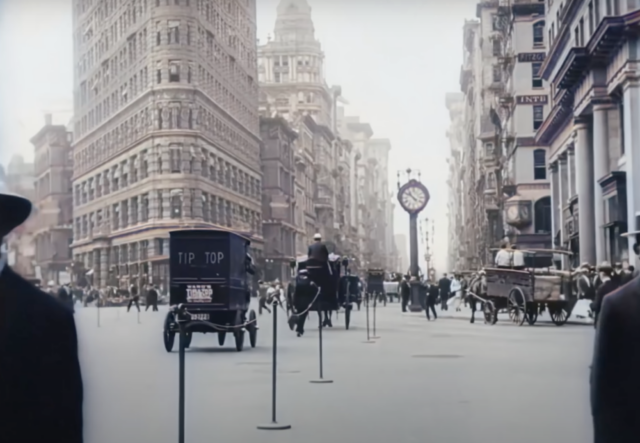
This vivid journey back in time depicts a metropolis that was similar in many ways. While the Ericsson statue and, of course, Lady Liberty remain unchanged, and the famous Flatiron Building is unmistakable, there have been changes over the past hundred or so years.
One of the biggest differences to modern times is the roads. “The streets in 1911 were lined with trolley tracks and were mostly bustling with buggies,” notes The Daily Mail, “But a few cars were used on the roads by the upper class.”
The publication also refers to Herald Square. “In the film, the New York Herald Building is seen but the building no longer exists,” it writes. “The area is still known as Herald Square, but it’s now full of restaurants and shopping stores.”
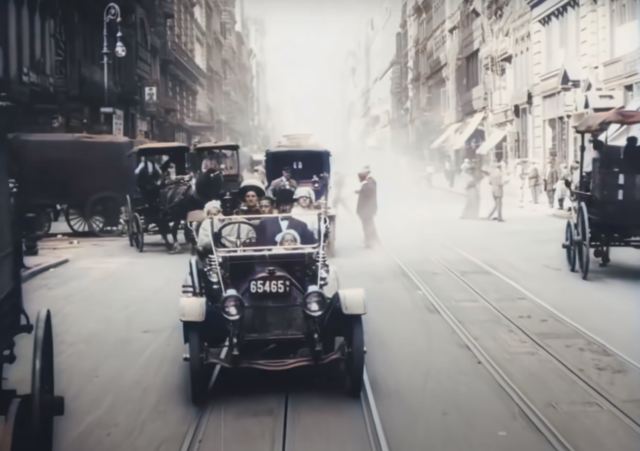
Developer Shiryaev has a form for this type of project. He also upscaled the Lumière Brothers’ Arrivée d’un train à la Ciota from 1895. When the film was first projected, it reportedly frightened audiences, who believed the onscreen train might fly out into the theater.
Eager restorers have also set their sights on the future – to be more precise, Star Trek shows from the 1990s. Some fans are unhappy with the picture quality offered by home entertainment releases and streaming services, and are using AI to upscale adventures aboard Deep Space Nine.
“I’m not going to claim that upscaling like this simply makes Deep Space Nine look like it was shot in modern times,” writes Joel Hruska in an article published by Extreme Tech, which explored what the process could do for Benjamin Sisko and crew. “The color reproduction is bad in all cases and no matter how good an upscaling algorithm is, it’s still an upscaler — and therefore not the same as having the original data via 35mm film.”
More from us: Funeral Directors Don’t Want the Public to Know These Things About Their Job
Similar criticism has also been leveled at Shiryaev’s restoration. The clue is in the name: “Artificial” Intelligence. While it’s impossible to fully appreciate the sights of the past without a time machine, this 4K slice of video magic is the next best thing.
